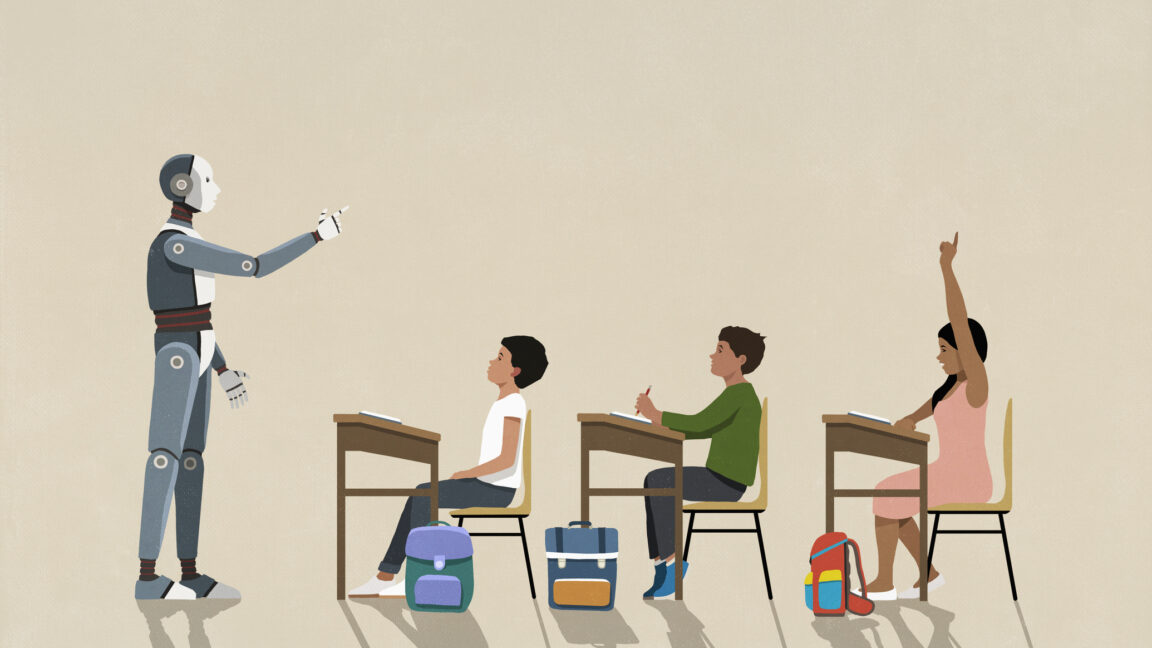Introduction to Study Mode
A handful of college students who were part of OpenAI’s testing cohort—hailing from Princeton, Wharton, and the University of Minnesota—shared positive reviews of Study Mode, saying it did a good job of checking their understanding and adapting to their pace. The learning approaches that OpenAI has programmed into Study Mode, which are based partially on Socratic methods, appear sound, says Christopher Harris, an educator in New York who has created a curriculum aimed at AI literacy.
The Potential of Study Mode
They might grant educators more confidence about allowing, or even encouraging, their students to use AI. “Professors will see this as working with them in support of learning as opposed to just being a way for students to cheat on assignments,” he says. But there’s a more ambitious vision behind Study Mode. As demonstrated in OpenAI’s recent partnership with leading teachers’ unions, the company is currently trying to rebrand chatbots as tools for personalized learning rather than cheating.
The Promise of Equal Access to Education
Part of this promise is that AI will act like the expensive human tutors that currently only the most well-off students’ families can typically afford. “We can begin to close the gap between those with access to learning resources and high-quality education and those who have been historically left behind,” says OpenAI’s head of education, Leah Belsky. This vision of Study Mode as a tool for education equalization is promising, but it also raises important questions about the tool’s limitations.
The Limitations of Study Mode
But painting Study Mode as an education equalizer obfuscates one glaring problem. Underneath the hood, it is not a tool trained exclusively on academic textbooks and other approved materials—it’s more like the same old ChatGPT, tuned with a new conversation filter that simply governs how it responds to students, encouraging fewer answers and more explanations. This AI tutor, therefore, more resembles what you’d get if you hired a human tutor who has read every required textbook, but also every flawed explanation of the subject ever posted to Reddit, Tumblr, and the farthest reaches of the web.
The Risks of Using Study Mode
And because of the way AI works, you can’t expect it to distinguish right information from wrong. Professors encouraging their students to use it run the risk of it teaching them to approach problems in the wrong way—or worse, being taught material that is fabricated or entirely false. This raises important concerns about the potential consequences of relying on Study Mode as a primary learning tool.
Conclusion
In conclusion, while Study Mode has the potential to be a useful tool for personalized learning, its limitations and risks cannot be ignored. As educators and students consider using this tool, it is essential to carefully evaluate its potential benefits and drawbacks. By doing so, we can ensure that Study Mode is used in a way that supports learning and promotes academic integrity.
FAQs
Q: What is Study Mode, and how does it work?
A: Study Mode is a tool developed by OpenAI that uses AI to provide personalized learning support to students. It works by adapting to the student’s pace and providing explanations and answers to questions.
Q: What are the potential benefits of using Study Mode?
A: The potential benefits of using Study Mode include personalized learning support, increased access to high-quality education, and improved academic outcomes.
Q: What are the limitations and risks of using Study Mode?
A: The limitations and risks of using Study Mode include its potential to provide incorrect or misleading information, its lack of ability to distinguish right from wrong, and its potential to teach students to approach problems in the wrong way.
Q: Can Study Mode replace human teachers and tutors?
A: No, Study Mode is not intended to replace human teachers and tutors. Rather, it is designed to provide supplemental support and guidance to students as they learn.











